TRM is the most appropriate option

Tanjim Ferdous National Consultant, United Nations in Bangladesh and Moderator of the session
Today's topic of discussion is " Sustainable river basin management to solve the waterlogging crisis of south-west Bangladesh" We will be analysing the problems with Bangladesh's water body management and drainage system and try to find solutions to such issues.

Mustafiz Shafi
Editor, The Daily Samakal
This discussion is all the more significant since two national newspapers, The Daily Star and The Daily Samakal, have joined hands in organising this webinar in order to use both Bangla and English to disseminate valuable information on the topic. Uttaran, which is also an organiser of this discussion, has been working on issues related to the south-west coastal region of Bangladesh for quite a long time. We hope that this tripartite effort will push us into finding solutions to the issues at hand. We believe that the media's role does not end with just publishing news; it extends to a much larger share of social responsibility. Issues of waterlogging in the south-west coastal region of Bangladesh date back to the 80s. The people living in the southwest coastal region are in a dreadful situation, spending even the winter season waterlogged. It is unfortunate that even after all this time, we have not been able to solve these waterlogging problems. Tidal River Management (TRM) approach was being implemented to resolve these problems but has stopped operating due to some social issues.
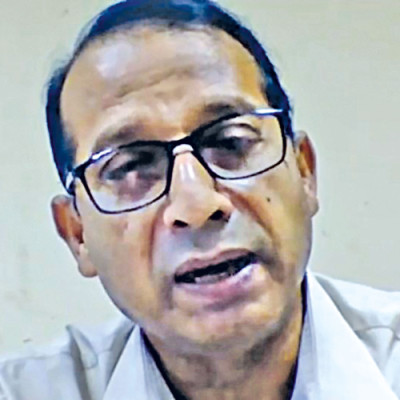
Shahidul Islam Director, Uttaran
Every year, 10 to 15 lakh people in the south-west coastal region face waterlogging issues. This waterlogged period lasts seven to eight months, and in some areas, even year-round.
Disaster swept in after the initiation of the coastal embankment project. Even though coastal embankment projects bring in many benefits for specific areas, they have had the opposite effect on the lower regions of Satkhira, Khulna, and Jashore, where tidal rivers exist. This is because the coastal embankment creates a division between the tidal rivers and the floodplains, causing tidal silt to deposit on the floodplains beyond the embankment, and water to flow out at high speed during low tide. After the construction of the embankment, tidal silt began to collect at the heart of the tidal rivers and started to build on the north and south edges. According to CEGIS, TRM is environment friendly, less expensive, technically feasible and highly socially acceptable and it is a unique solution to the waterlogging problem of southwest part of Bangladesh. This is how TRM came about. Till 2012, due to the implementation of TRM, there was no waterlogging. However, due to a social reason in the Beel Kapalia area, the project was cancelled, and now waterlogging has increased in many areas. In 2011, the government undertook a project worth Tk 262 crore to dredge the River Kopotakkho and to implement TRM which has resolved the water-logging problem in the area. The government has already approved a project to solve the water-logging problem in Satkhira which includes several tasks such as dredging, silt removal and embankment repairment but no TRM. There was also a demand for removal of sluice gate and embankment from the two rivers that feed the Ichamati River which also has not been included in the project. I hope the government will listen to the demands of the local people.

Zahirul Haque Khan Deputy Executive Director, Institute of Water Modelling (IWM)
Tidal rivers require a certain level of tide to survive. If the level drops, the river shrinks, silt builds up, and the river slowly dies. Sediment and flow dynamics need to be understood. In the southwest coastal region, during the dry season, a large amount of silt comes from the sea through high tide.
There are two reasons why rivers are becoming filled with silt. Firstly, there is a lack of sufficient upstream flow of water. Secondly, the coastal embankment project is not allowing the areas to be flooded by tidal water. So, instead of accumulating on the floodplains, the silt is filling the rivers and killing them.
Earlier tidal water used to flood extensive floodplains and the tide level in the rivers was proper. As soon as the coastal embankment project began and upstream water flow decreased, rivers started to die. Multiple projects have shown that TRM helps rivers increase tide levels and gain depth. TRM is a natural solution without requiring much infrastructure. However, there are social and institutional challenges to implementing TRM since it requires land, which people do not want to give up. We cannot save a river or stop waterlogging through only dredging. Dredging and TRM have to go hand in hand.

Dr Shamsul Alam Secretary, Planning Commission
The problems in the south-west region are long-term. We have tried to include these issues in the Bangladesh Delta Plan 2100 (BDP 2100). The problems began in the 80s when shrimp and fish farming had just started. Many canals, beels, and rivers had to be made suitable for shrimp and fish farming, which further led to the creation of these issues. Shrimp and fish farming in these water bodies have now been stopped.
There are many canals and creeks connected to the rivers, which cannot be closed up and used for shrimp and fish farming since the flow of the water would be cut off. Rivers get filled due to lack of water. Water flow from upstream and from other canals and creeks will help keep rivers alive.
TRM is only possible in ten beel areas. There is also conflict regarding this. Many people are against TRM because it disrupts their fish farming. On the other hand, some farmers are supportive of it since it allows them to cultivate crops. TRM is, therefore, not the only solution. We have mentioned ten other solutions in the BDP 2100. Since farmers may not have as much influence, there is a need for political goodwill and power. Dredging, along with keeping the canals and creeks connected to the rivers, is the best solution.
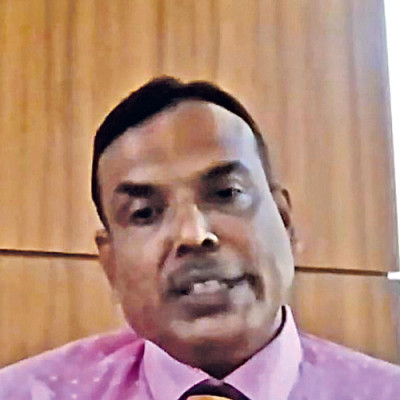
Bisnu Pada Datta Chairman, Payra
The sluice gate which is situated in Bhabadaha is on the Hari River. This has stopped working after silt filled the river in the mid-80s. This is the main reason for waterlogging issues in this area. The upstream and downstream of the river have two beels. Sluice gates were used for water drainage. As long as the silt that has accumulated is not removed, the suffering of the local people will not end. If the rivers are not saved, we will have no choice but to migrate in vast numbers to different areas.
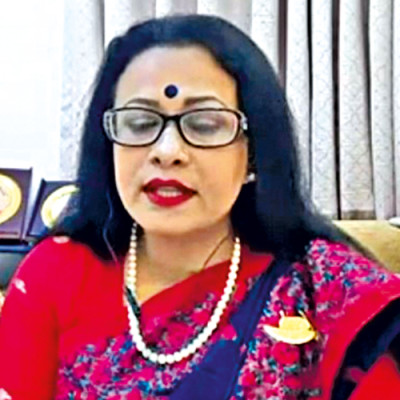
Josna Ara
Counsellor, Satkhira Municipality
For the past 20 or 25 years, Satkhira has remained in a waterlogged state and with time, the condition is drastically deteriorating. As a result of this, for around six to eight months, every year, people are forced to reside in this waterlogged condition. A majority of these people migrate from here to find a better life outside.
Women are the most affected population with most of their household activities disrupted by the waterlogged state. The youths and the seniors also face their fair share of suffering. The children are unable to receive a proper education. Furthermore, the health and sanitation situation remains quite dire. There is a huge lack of employment opportunities here and the resulting poverty leads to violence against women and children.
Continuing TRM is the only logical solution out of this situation. TRM can greatly improve the condition of the waterlogged rivers. We need to start TRM for Betna River and Morichap River and establish a connection between Ichamati River with Sapmara and Labonnoboti canal. This can save around 15 lakh people in this area from the curse of waterlogging.

ABM Shofiqul Islam
President, Paani Committee
Recently, projects undertaken in the south-west coastal region have cancelled TRM even though TRM has been recommended to be the best solution to waterlogging issues.
Waterlogging has had a negative impact on agriculture, and financially affected the people in south-west. Paani Committee has tried to come up with financially viable solutions for these issues in order to sustainably develop these areas.
Mobilising the rivers in the coastal regions is essential for the preservation of the Sundarbans. This can only be ensured through TRM.
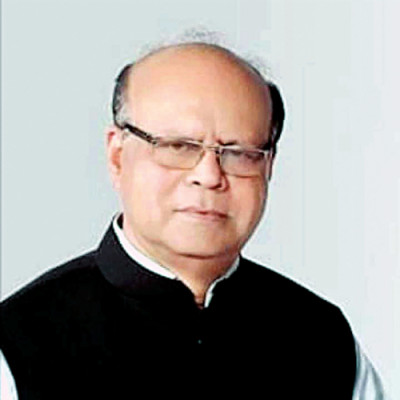
Swapan Bhattacharjee, MP, State Minister, Local Government and Rural Development (LGRD), Ministry of Bangladesh
There is no alternative to TRM, but it is not a permanent solution. It is certified to be effective for at least five to seven years. River dredging alone can never be a solution to waterlogging – this is the belief of both the government and the local people. I would like to suggest that among the 25-30 rivers and canals, dig only those are required and use the spare money for implementing TRM project in Kapalia. Dredging and TRM together could be an effective solution. Silt removal can be effective temporarily, but if there is a low level of tide, the rivers will be filled with silt again.
Currently, lakhs of people are waterlogged in Manirampur. They cannot cultivate crops and are having to live in crowded areas. They do not have access to clean drinking water. They are unable to partake in their daily activities, and even schools and colleges have closed down. Therefore, removal of water is necessary, and for that, the Amdanga canal should be dug deeper and broader and connected to the Bhairab River. This will cause at least 25 percent of the water to be removed. The rest of the water has to be removed through the 21-vent sluice gate. Running the 21-vent sluice gate will lower the tide level. TRM is the only way to raise the tide level.

Ad. Kamruzzaman Former Chairman, Member, Paani Committee
The people of the south-west coastal region are people who have lived their entire lives on boats, but now the rivers on which their boats sailed are dying. We have informed concerned authorities many times about the state of the rivers. After discussion with thousands of relevant individuals, we have concluded that there is no alternative to TRM. River dredging has been done to dig up 80 lakh cubic metres of silt. Do we even have space to keep this massive amount of silt? Unrestrained tide can be created by removing silt from the beels, that too with a relatively low amount of funds. Indigenous knowledge of the local people must be respected and utilised when trying to find solutions to the waterlogging issues and the only proper solution to the issues is to continue TRM.

Abul Kalam Azad Journalist, Member, Paani Committee and Member, Satkhira Nagorik Committee
Morichap River and Betna River have been dredged for the last ten years along with a lot of other canals associated with these rivers. But dredging is not a solution to waterlogging in Satkhira. The issues arise due to not receiving an even flow of water from upstream. Establishing a connection of Ichamati River with Sapmara canal and Labonnoboti canal is crucial to fix this problem.
We do not know why TRM was not included in river management projects although its importance was stressed upon.
Shrimp farming poses another huge problem. Hundreds of kilometres of embankments have been constructed over beels for shrimp farming and these embankments contribute to waterlogging by obstructing the flow of water.

MD Aminul Haque, Director General, Bangladesh Water Development Board (BWDB)
The current problem faced by the south-west region is quite complex. In the past, there used to be a hydro-morphological relationship between the Ganges River and the Bay of Bengal. With this connection being broken, disturbances have been created in the flow of the tide. This has led to increased sedimentation which further blocks tide flow. The water level also rises due to the sediment deposition in the waterbeds.
TRM is definitely the most helpful solution along with ensuring proper flow of tide. Just dredging and excavating the canals in is not the way out. We must introduce a connection between them to allow the proper flow of the tide. This will also greatly reduce sedimentation. We have already sent a project to Bhabadaha in this regard. 11 projects have been sent to the Planning Commission among which 2 have been passed and 6 projects are under active consideration.
The study by IWM shows that if we continue TRM in the existing beels, after 25 to 30 years, there will not remain any space to conduct TRM. The beds of these beels would rise and the entire ecosystem would be disturbed. As a result, I believe, excavating and dredging the beels and canals and establishing connectivity among them would give us a more notable outcome. We also need to ensure that the tide can propagate for its full duration of time.
Although TRM has a lot of administrative complexities involved, due to TRM, the people residing on both sides of Kopotakkho River are now free of waterlogging. These people are able to cultivate crops on their land now and migration has also significantly dropped.
TRM has not been included for Betna and Morichap River. Without TRM, the rivers and canals in those areas will be dredged and silt will be removed. But the issue with tides will not be resolved and these rivers will not regain their life.
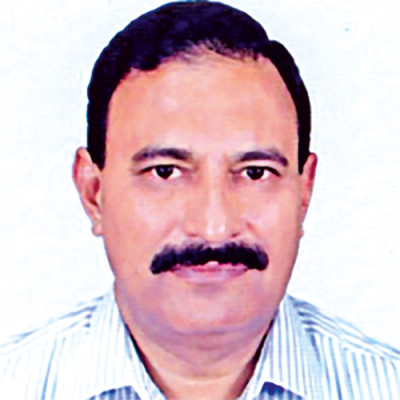
Ad. Mustafa Lutfullah, MP, Satkhira 1
Construction of embankments, sluice gates, and unplanned shrimp farming has ruined the natural TRM in some areas. We must also look into silt management and how to use this silt for making land more fertile.

Malik Fida A Khan, Executive Director, Center for Environmental and Geographic Information Services (CEGIS)
TRM is an indigenous river management practice. The use of TRM to solve the existing issues has not propagated properly through the policy level yet.
Tidal asymmetry impacts the flow of the river. It causes the flow to decrease which gives rise to sedimentation. TRM is definitely a medium through which a solution can be reached and we must look into making it socially and environmentally acceptable. But, apart from TRM, we must look into other ways we can increase upstream flow of river water and re-establish connectivity between the water bodies. The size of the sluice gates placed in the coastal areas and the materials used to construct them also need more innovation.
We must consult the locals as they can convey valuable information and show us the way towards a sustainable solution.
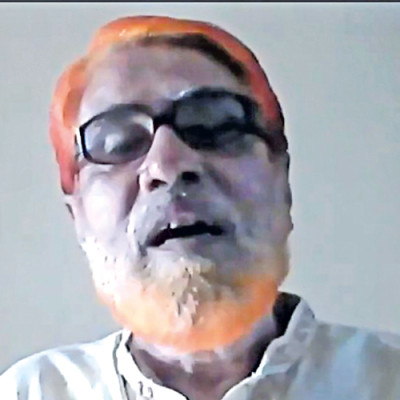
Hashem Ali Fakir, Member, Paani Committee
Sediment deposition in the rivers is a critical issue in our area. The rivers and canals in the Sundarbans are also being affected now. The situation has transgressed to a point where the residents are now forced to question the habitability of their areas.
Dredging of the rivers will not bring the current situation under control. So far, there is no substitute for TRM to tackle waterlogging issues.
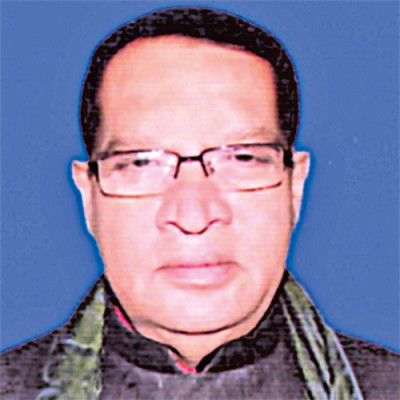
Bir Muktijoddha, Mir Mushtaque Ahmed Robi, MP Satkhira 2
Even during this pandemic, our Honourable Prime Minister has allocated BDT 476 crore on a project for the mitigation of waterlogging in the south-west.
It has been found now that the dams and sluice gates constructed during the 70s were not built properly. These improper constructions have led to massive problems for the people in the south-west. TRM is not the only solution to this problem.
Houses and fish enclosures have sprung up in the areas where the rivers have dried out. Unplanned fish farming is a common scenario even in the cities. The recent cyclones have deteriorated the situation further. Absence of proper management is a huge problem and even rains can lead to waterlogging.
Dredging of the rivers need to be done all over the country and not just in Satkhira. River dredging is crucial to ensure proper flow of these rivers. Connectivity of the rivers is also important as it stops the river from staying stagnant.
The experts need to come up with a permanent solution soon.

Hosne Ara Hasi, Chief Executive, Jago Nari and Member, Excecutive Committee, Start Fund Bangladesh
Start Fund Bangladesh has been working since 2017 and providing rapid responses to disaster management.
Waterlogging is prevalent throughout the coastal regions. Barguna district has lost multiple rivers with increasing levels of salinity in their existing rivers. We need to decentralise the planning and management process if we want to see actual improvement in these areas. TRM can be a part of this management process but there needs to be more research on this topic. We need consistent dredging in the coastal regions and work out the key reasons behind the rivers getting filled up.
Housing projects are being developed outside embankments. We need to move away from this. We also need to make arrangements for fishermen.
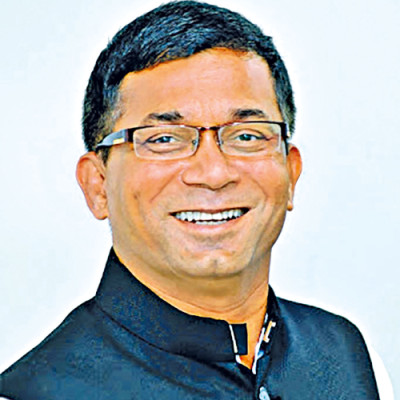
AKM Enamul Hoque Shameem, Hon'ble Deputy Minister, Ministry of Water Resources
Our honourable Prime Minister has directed us to find permanent solutions to the water-logging and river erosion problems in the country. We have been regularly visiting vulnerable areas. We have already implemented 11 projects worth Tk 15,000 crore in the southern part of the country. Currently, projects worth Tk 1,500 crore are under implementation in the area. Now, we have 16,000 km beribadh (embankment) and 2,500 km dubobadh (submersible embankments) in the country. We are also planting trees on river embankments and dredging rivers.
The water-logging problem of the south-west is different. Most of the participants in today's discussion have talked in favour of TRM as a solution to the water-logging problem of the area. I want to assure you all that I would visit the water-logged areas in Jashore by the end of this month and find a sustainable solution to the problem in consultation with all the relevant stakeholders including the affected people.

Shahidul Islam,
Director, Uttaran
I would like to express my gratitude to all the participants of today's programme. The people of the south-west area in Bangladesh have been suffering from water-logging for a long time. I hope that today's discussion will play an important role to resolve the perennial water-logging problem.



 For all latest news, follow The Daily Star's Google News channel.
For all latest news, follow The Daily Star's Google News channel. 



Comments